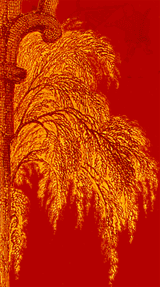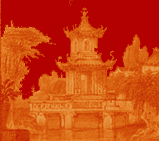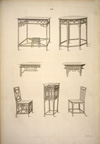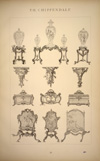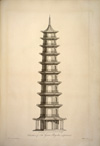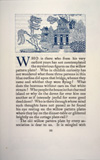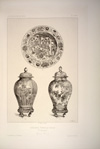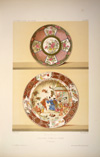
18th century European fascination with the exotic took the form of delight in Chinese silks, porcelain, painting and furniture, collectively known as chinoiserie. It is still strange to encounter an imitation Chinese pagoda in Kew Gardens in London, modelled - albeit inaccurately - on the former porcelain pagoda at Nanking (Nanjing), which was pictured in Nieuhof's account of the 17th century Dutch embassy to China; or the interior décor of the Brighton Pavilion built by the Prince Regent in England in 1818-23. At the time, there was a flurry of building in Chinese style by the gentry and aristocracy of Europe.
The influence on furniture design and painting can still be seen in the furniture style known as Chippendale as well as in French furniture of the period. The Chippendale pattern book in the display also illustrates the popularity of Chinese silk and porcelain in interior design. While the influence on architecture and décor was largely restricted to the extremely wealthy, Chinese porcelain became widely admired and increasingly available. A huge export trade developed in the 19th century in ceramics specifically designed for the western market. Chinese ceramics were also the inspiration for European ceramic production both in design and technique: the technique required for porcelain manufacture being mastered in 1707 in Meissen, Germany after years of effort to achieve the fine quality found in Chinese ceramics.
